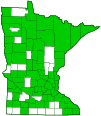Virginian tiger moth
(Spilosoma virginica)
Conservation • Description • Habitat • Ecology • Distribution • Taxonomy
| Hodges # | 8137 |
||
Conservation Status |
|||
| IUCN Red List | not listed |
||
| NatureServe | N5 - Secure |
||
| Minnesota | not listed |
||
Description |
Virginian tiger moth is a common, medium-sized, tiger moth. The adult is ⅝″to 1″ long and has a wingspan of 1¼″ to 2″. The thorax is densely covered with long white hairs. The abdomen is white and yellowish-orange with an upper (middorsal) and two lateral longitudinal rows of black spots. The wings are pure white. The forewing usually has one to three small black dots more or less in a line; one near the base along the antemedial line, one near the end of the discal cell, and one closer to the margin. Any or all of them may be absent. The hindwing usually has more and larger black spots; a spot in the discal area, and a row of spots in the postmedial area. The head is white. The antennae are feathery, with extensions along both sides of the shaft (bipectinate). The forelegs are yellowish-orange and black, the other legs white and black. This tiger moth is most easily recognized when in the caterpillar stage. The caterpillar is densely covered from head to rear with long, orange or yellow, occasionally white, red, or black, hairs (setae). The setae are in clusters of several dark, short hairs and a single light, much longer hair. The longest hairs are more than three body segments in length. There is a small breathing hole (spiracle) surrounded by a white oval on both sides of each thoracic segment and all but the last abdominal segment. There are yellow markings on the abdomen. Mature caterpillars are found from May through November. |
Size |
Wingspan: 1¼″ to 2″ Total length: ⅝″to 1″ |
Similar Species |
Agreeable tiger moth (Spilosoma congrua) abdomen is pure white with no yellow patches or black spots. The forewings usually have many small black spots. The hindwings are unspotted except for a small discal spot. |
Habitat |
Woodlands, forests, fields, gardens. |
Ecology |
Season |
Two generations. May to November |
Behavior |
|
Life Cycle |
The female extrudes an organ that emits a pheromone. Males are attracted by the scent of the pheromone. After mating, the female lays groups of 20 to 100 yellow eggs on the underside of a leaf. The caterpillar feeds for a short time and then spins a cocoon. After two or three weeks in the cocoon it emerges as an adult. The last generation in a year overwinters as larvae. Caterpillars are discovered by humans most often in the fall, when they are searching for a suitable location to hibernate. |
Larva Hosts |
A wide variety of trees, shrubs, and low-growing plants. |
Adult Food |
|
Distribution |
||
|
Sources 7, 21, 24, 27, 29, 30, 71, 75, 82, 83. Biodiversity occurrence data published by: Minnesota Biodiversity Atlas (accessed through the Minnesota Biodiversity Atlas Portal, bellatlas.umn.edu, 9/1/2025). |
|
| 9/1/2025 | ||
Occurrence |
||
Widespread and common |
||
Taxonomy |
|
Order |
|
Superfamily |
Noctuoidea (Owlet Moths and Allies) |
Family |
Erebidae (Underwing, Tiger, Tussock, and Allied Moths) |
Subfamily |
Arctiinae (tiger moths and allies) |
Tribe |
Arctiini (tiger moths) |
Subtribe |
Spilosomina |
Genus |
Spilosoma |
Until recently, tiger moths and lichen moths were treated as a separate family Arctiidae. A recently published monograph (Lafontaine and Schmidt, 2010) contended that the Arctiidae “were more closely related to groups within the Noctuidae than to non-noctuid families.” The Arctiidae were transferred intact to the family Erebidae as a subfamily (Arctiinae). The former subfamilies are now tribes and the former tribes are now subtribes. |
|
Subordinate Taxa |
|
|
|
Synonyms |
|
Diacrisia virginica Spilosoma fumosa |
|
Common Names |
|
Virginian tiger moth yellow bear (caterpillar) yellow woollybear (caterpillar) yellow woolly bear (caterpillar) yellow woollybear moth |
|
Glossary
Seta
A usually rigid bristle- or hair-like structure on Butterflies and Moths used to sense touch. Plural: setae.
Spiracle
A small opening on the surface of an insect or arachnid through which it breathes.
Visitor Photos |
Share your photo of this insect. |
||
This button not working for you? |
||
Josie Brow |
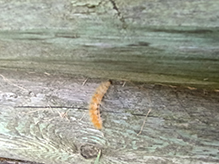 |
Luciearl |
||
 |
||
Micheilei Traver |
 |
Karen Bester |
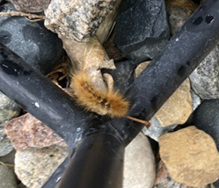 |
Lucy Morrissey |
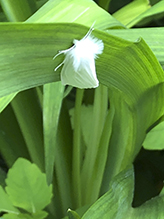 |
Yellow Woolly Bear Moth (Diacrisia virginica) |
Alison Pauley |
||
Found this on a milkweed plant. Brought it home and it continued to eat on milk weed for a day or so before searching to make a coccon |
||
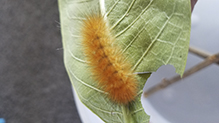 |
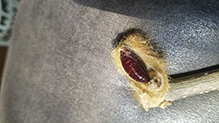 |
|
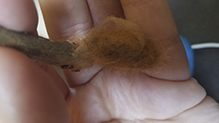 |
||
Natures helper |
 |
Hungry for water lily. |
Vickie Johnson |
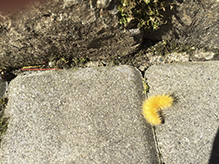 |
Tom Baker |
||
 |
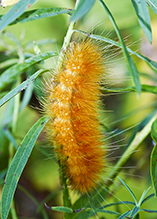 |
|
MinnesotaSeasons.com Photos |
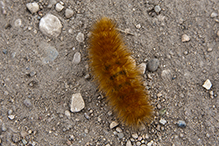 |
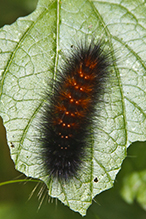 |

Slideshows |
Yellow woolly bear caterpillar |
About
Larvae of the Virginia Tiger Moth Spilosoma virginica adult: bugguide.net/node/view/498 |
Virginia Tiger Moth (Spilosoma virginica) |
Spilosoma virginica (Virginian Tiger Moth) |

Visitor Videos |
Share your video of this insect. |
||
This button not working for you? |
||
|
Other Videos |
Virginian Tiger Moth (Erebidae: Spilosoma virginica) Caterpillar |
About
Uploaded on Aug 20, 2010 Photographed at the Rydell NWR, Minnesota (20 August 2010). Go here to learn more about this species: http://bugguide.net/node/view/498 |
Yellow Wooly Bear Caterpillar - Spilosoma virginica |
About
Published on Aug 11, 2012 Spotted this wooly bear caterpillar crawling quickly across a rock near the Art Barn on Star Island, Isles of Shoals, New Hampshire on August 5, 2012. It was on the move and most likely searching for a suitable place to hibernate. I believe this is a Yellow Wooly Bear Caterpillar. I have submitted an image of it to BugGuide.net for confirmation. :-) |
Virginian Tiger Moth (Erebidae: Spilosoma virginica) Caterpillar |
About
Uploaded on Jul 28, 2009 Photographed near Mekinock, North Dakota (27 July 2009). |
Virginian Tiger Moth (Erebidae: Spilosoma virginica) Lateral View |
About
Uploaded on Aug 8, 2011 Photographed at Fisher, Minnesota (07 August 2011). Thank you to Paul Dennehy (@Bugguide.net) for confirming the identity of this specimen! |
Orange woolly bear crawling |
About
Published on Jun 5, 2013 An orange woolly bear, larva of the tiger moth Spilosoma virginica, busily crawls through tall grass. |

Visitor Sightings |
Report a sighting of this insect. |
||
This button not working for you? |
||
Alison Pauley
9/16/2018
Location: Sheldon, Iowa. O'Brien County
Found on a milkweed plant in a local park.
Alex
9/2/2018
Location: Pelican Lake (Breezy Point), Minnesota
MinnesotaSeasons.com Sightings |

|
Created 8/18/2010 Last Updated: © MinnesotaSeasons.com. All rights reserved. |

